Lighting Tips
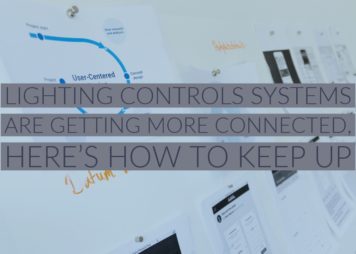
Lighting Controls Systems Are Getting More Connected, Here’s How To Keep Up
Connected Lighting Is Here, Now What? Lighting control systems today are evolving as rapidly as...
Read Article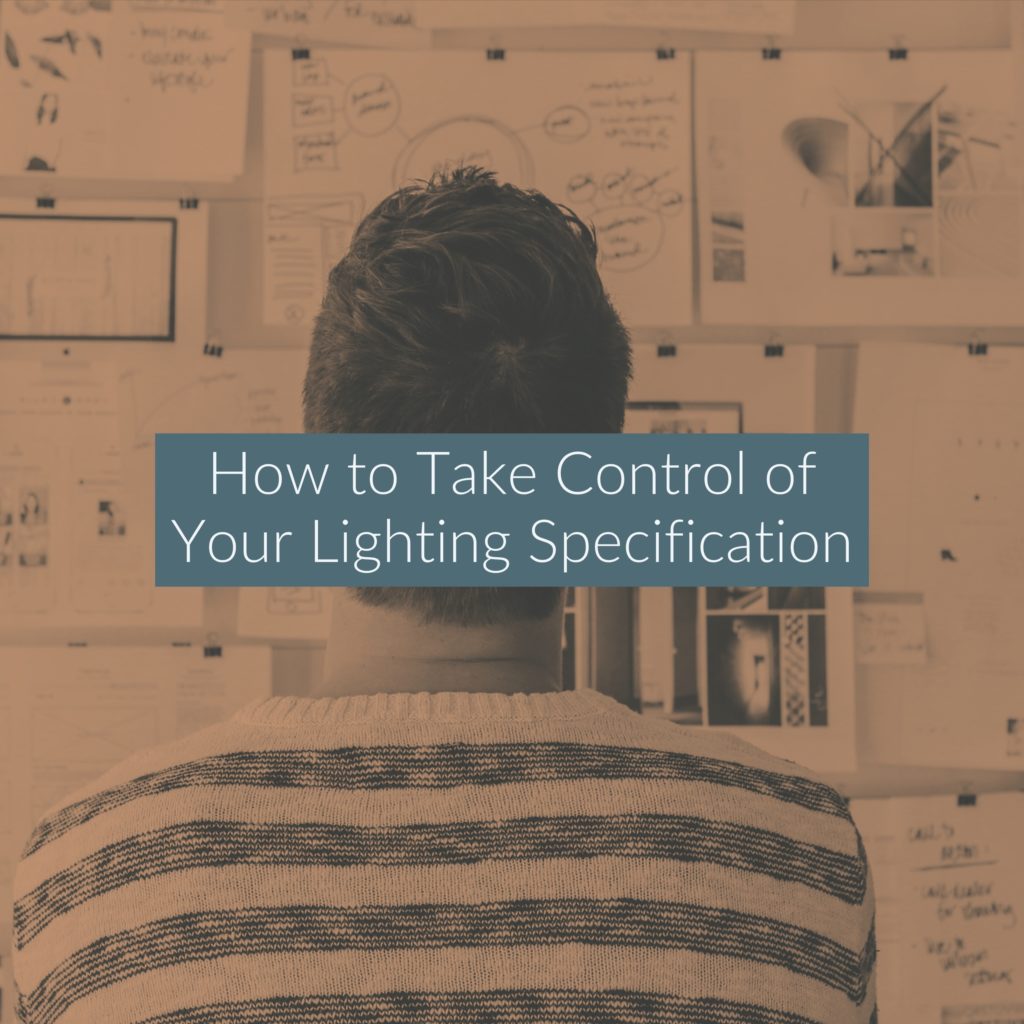
It’s a long and winding road from when a project spec gets written to when it gets installed on a job site. Along the way there are lots of things that can happen to your lighting spec. If you’ve ever had the experience of getting a submittal package back that bore no resemblance to the fixtures you specified, you know this to be true.
So how do you take control of your spec?
When your project drawings go out to bid here’s roughly what happens.
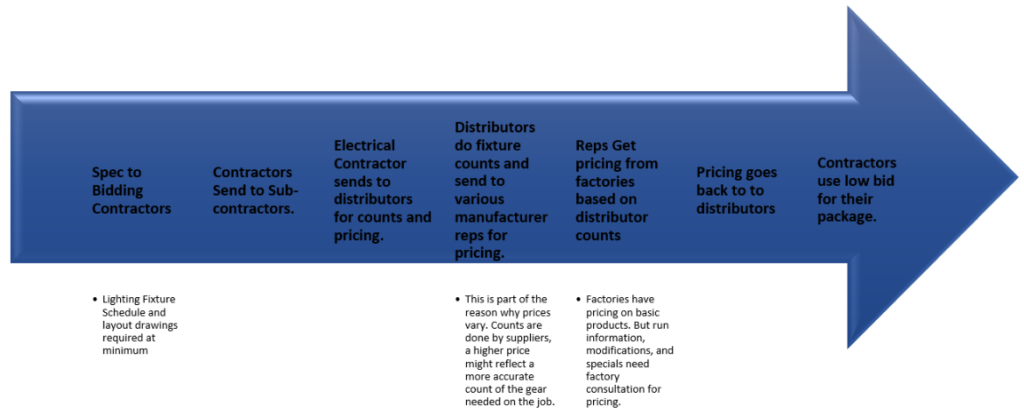
It’s important to note that this is happening earlier and earlier in the design process. It’s not uncommon for owners/clients to request pricing on DD rather and Bid Set or CD drawing packages. Everyone is working to get an early jump on the value engineering process (more on that in a second).
The graphic above is a very clean version of the process. Anyone who’s worked in the field knows that there are numerous RFIs, re-counts, design changes etc. A truncated version of this will also happen after a contractor is awarded the job if there are changes.
Once the job has been awarded, there is quite often a value engineering process. This is where a specification can quickly get picked apart. For most common form factors (troffers, downlights, cove lights, slots) there is always a cheaper solution. Lighting fixtures get cheaper for lots of reasons, some are good reasons (engineering out cost) others are bad solutions (like sacrificing color quality, allowing glare or light leaks). Here’s the reality, when an RCP calls out a 2×2 troffer or a 6” downlight, suppliers will work to substitute for less expensive solutions. Their role in the process is not to ensure the most beautiful light, it’s to bring the job in on budget. That said, there are ways avoid the VE monster.
If you’re specifying a 4.5” downlight and your product description calls out a 1500 lumen / 3500K / 4.5” round downlight, with a corresponding part number, you’re opening up the job to substitution. How do you sure up your spec? Use complete part numbers and call out remarkable features. Something like the TrimlockTM Feature from Williams…
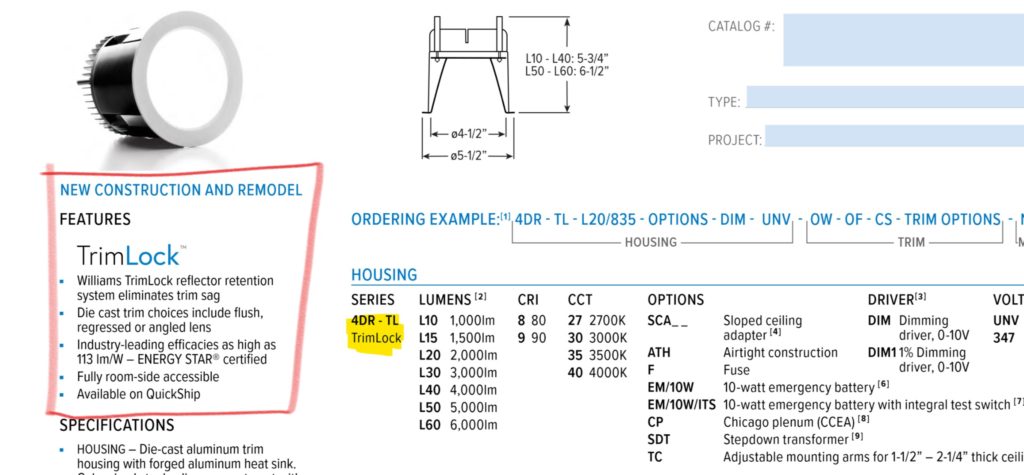
Or perhaps a totally unique mounting system from USAI and Armstrong Ceiling Solutions…
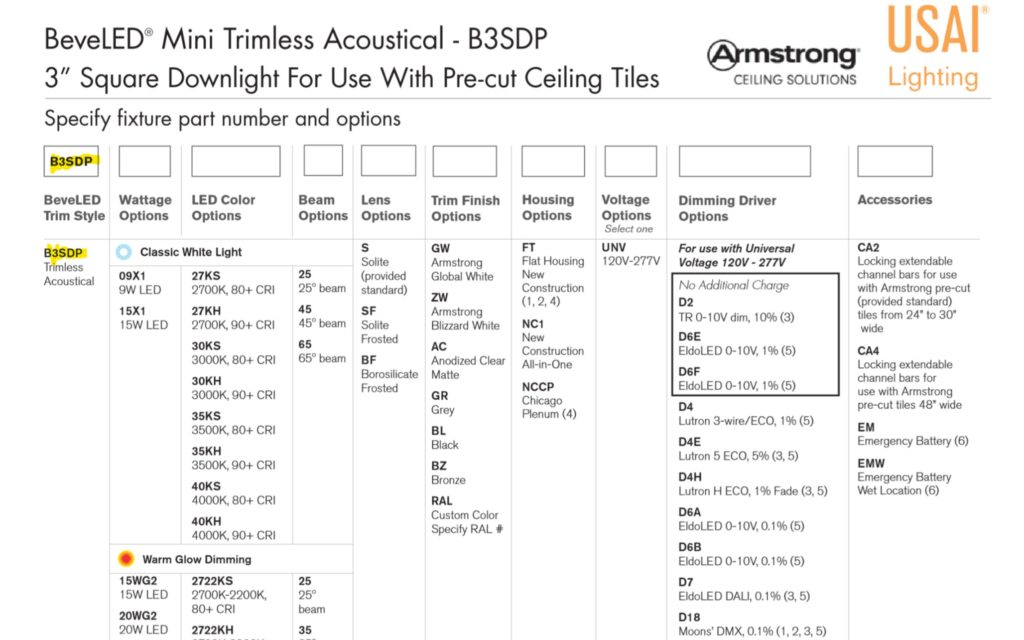
These kinds of unique features move the fixture from a generic downlight to a specific product that will be much harder to swap out. By the way, if you’re reading this and saying “but I don’t want fancy mounting” then choose other parts of the spec that matter (e.g who’s the chip maker? Built in America? Color consistency?) Having one or more features like that will greatly reduce your odds of VE/crossover.
Substantiating a fixture spec is about more than just providing a cut sheet package. Justifying a spec like the Trimlock feature from HEW or the trimless acoustical tile feature from USAI needs a certain amount of education from the contractor. This makes sense, they’re new features to the market. Both are designed to simplify and speed up installation. But a contractor won’t know that just by looking at a cut sheet. To make a spec stick include installation instructions, offer a pre-bid meeting to explain the features that will make the fixtures you chose easier to install. Send links to intro videos and whatever other materials you can as supplements to the bid documents to explain the spec.
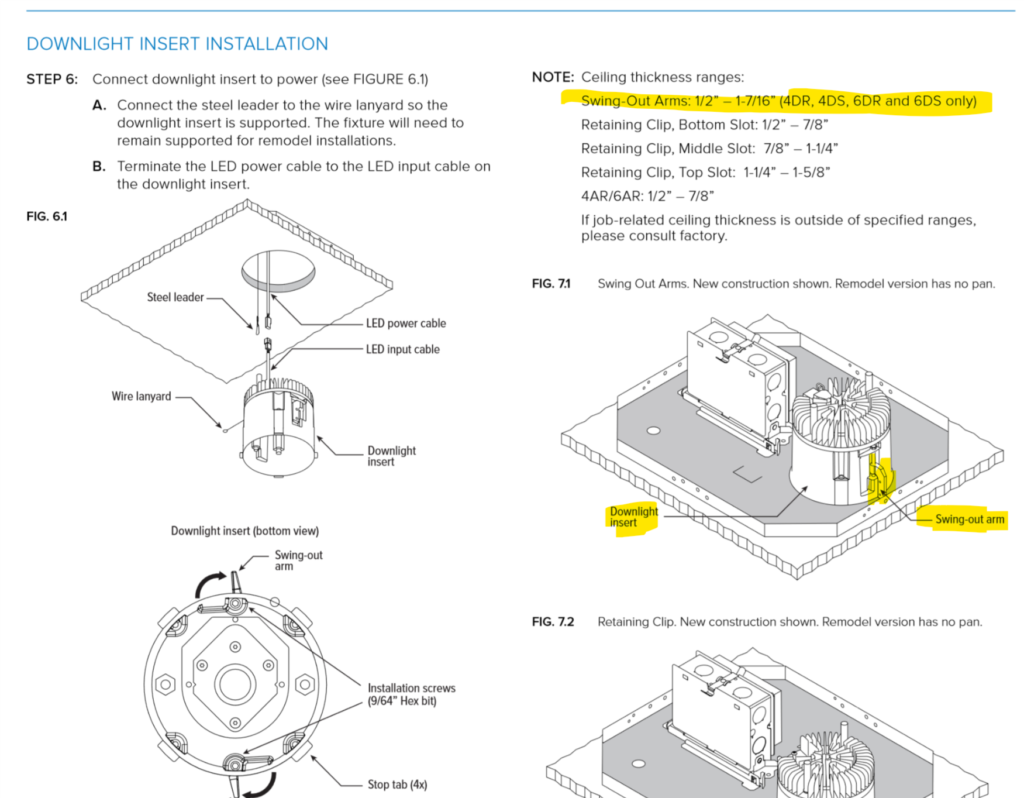
You wouldn’t specify a carpet, or wall covering, or a piece of metalwork without having seen a sample. Yet, when it comes to lighting too often a cut sheet alone is accepted. Make sure you see the fixtures firsthand. Seeing the quality of light coming out of the fixture, understanding how it will be installed, seeing how it will change the tone of your finishes, are all integral to defending your spec. When you get push back that XYZ brand is 10% cheaper, you want to be able to tell your client “Yes…but it will make the stone you chose for the lobby look green…”
Every two years, we host our showcase at the Metropolitan Pavilion on 18th Street. If you’ve never been, this is your chance to jumpstart your lighting design process by seeing 70 different lighting brands under one roof.
RSVP below.
Fill out the form below and we'll be in touch as soon as possible.